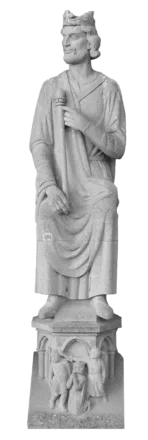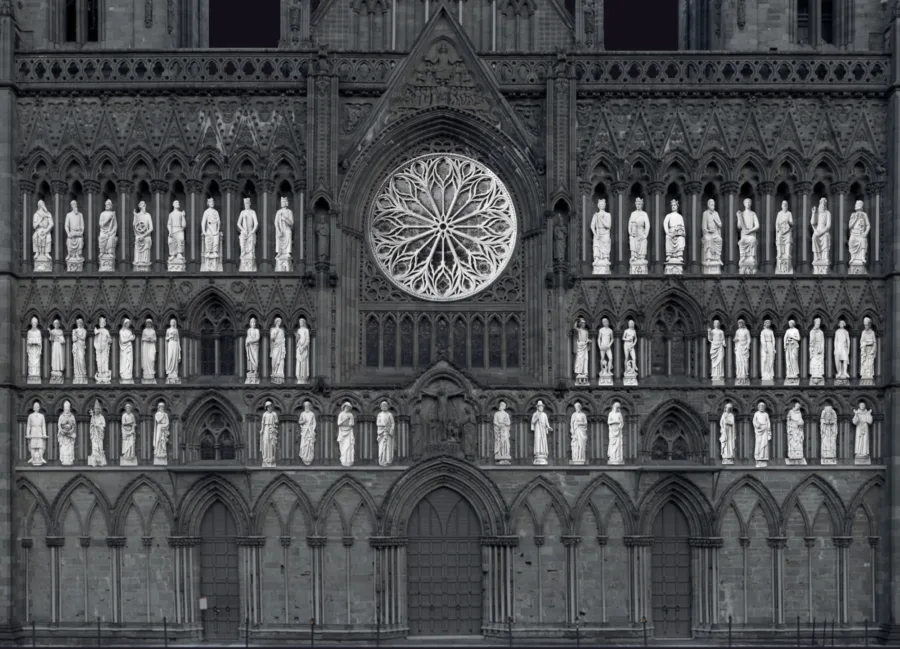The rose window
At 8 metres in diameter, the rose window is the West Front’s dominant feature.

Including the nine lancet windows beneath the rose, the entire window stands 12 metres tall. It is uncertain whether the West Front originally had such a large window. A picture from 1661 shows just the lower part of a large window opening.
This was probably the remains of a substantial English-style window that was installed here after the fires of 1328 or 1432. A window of this kind was preserved in the north transept until the restoration work in the 1890s. Originally, this area probably contained a smaller window and more statues.
The idea of a rose window was supported by descriptions from the 16th century when the facade lay in ruins. These descriptions told of a rose in the gable and this rose was linked to the city’s Latin name – Nidrosia – which was erroneously interpreted as meaning that Trondheim was “the river Nid’s rose”. The correct interpretation of Nirdaros is “Nidar-os” or the river Nid’s mouth or estuary. The misunderstanding lives on in Trondheim’s city flag, which shows a golden rose on a red background.
Motifs
The red central point symbolises Christ, surrounded by angels singing and playing instruments. The nine sharply pointed lancet windows underneath show Judgement Day, with Christ who is judging in the centre. The blessed stand to the south, while the damned stand to the north. In the gable above the window stands a relief of Judgement Day, flanked by reliefs of angels blowing trumpets.
On the exterior, the rose window is flanked by the five wise virgins on the north side, with John the Baptist above, and the five foolish virgins on the south side, with Moses above. On top of each pinnacle stands an angel holding a crown.
About the work
The rose window’s tracery was designed by cathedral architect Olaf Nordhagen and was completed in accordance with his plans in 1930, in time for the 900th anniversary of the Battle of Stiklestad and the death of St Olav. The glass was painted by Gabriel Kielland. The window was funded by donations from Norwegian women, at the initiative of Marie Gleditsch, wife of the then bishop of Nidaros.
-
Design of tracery
Olaf Nordhagen
-
Glass painting
Gabriel Kielland


